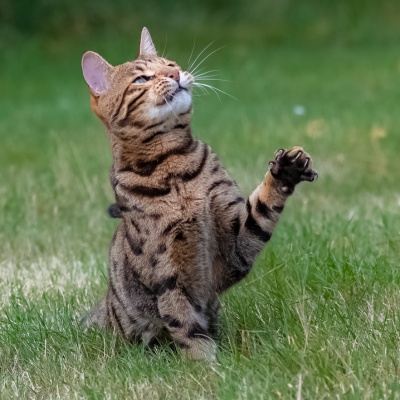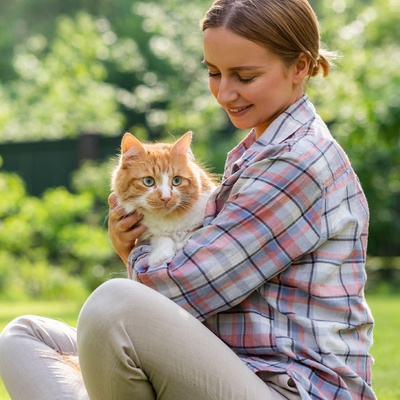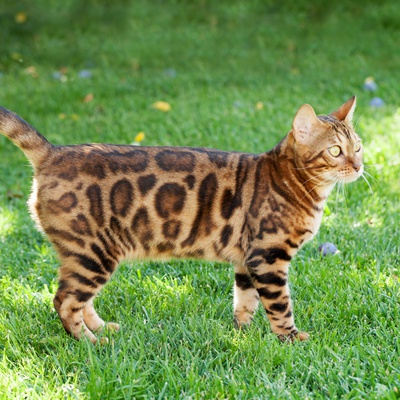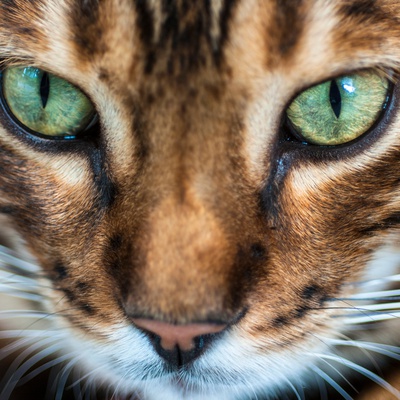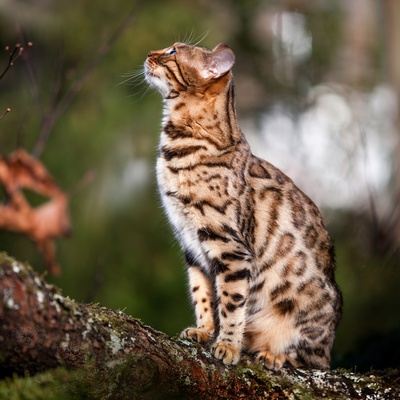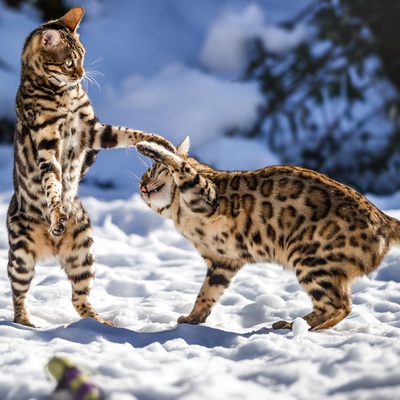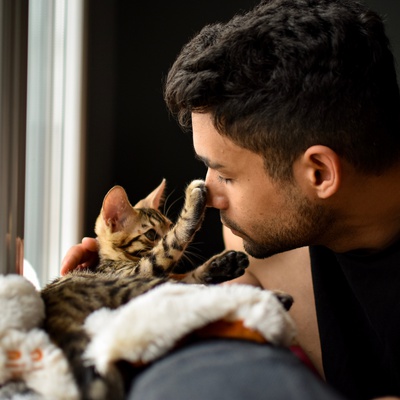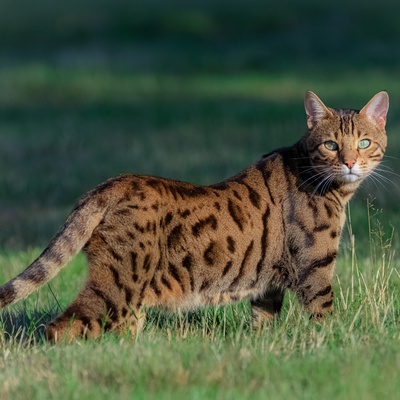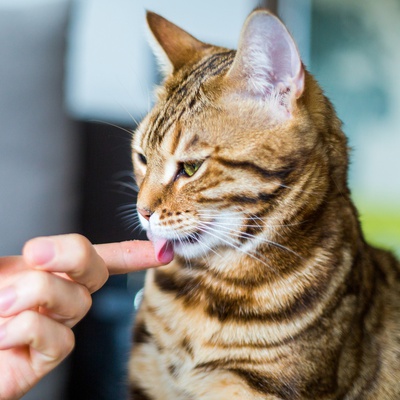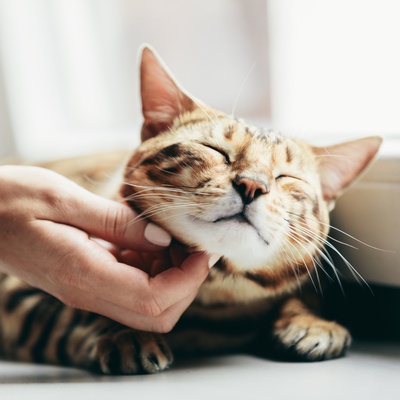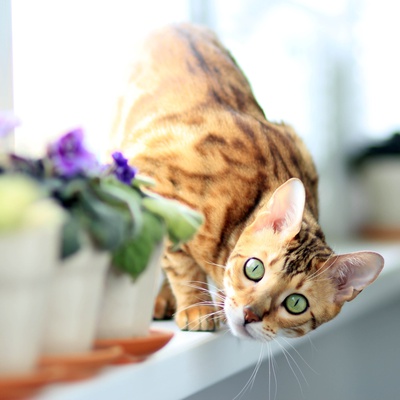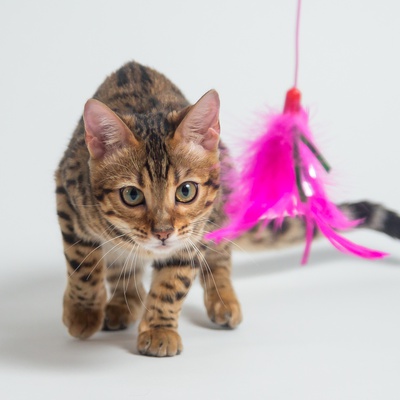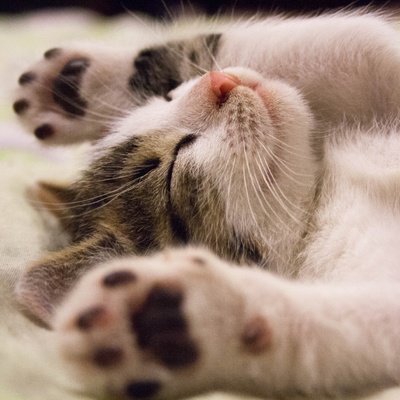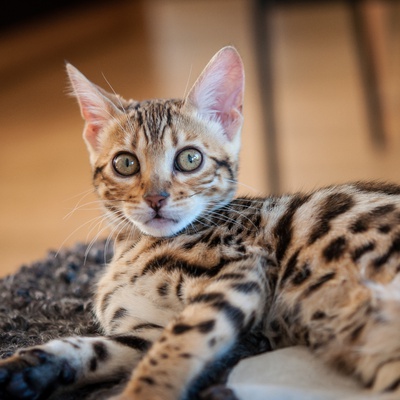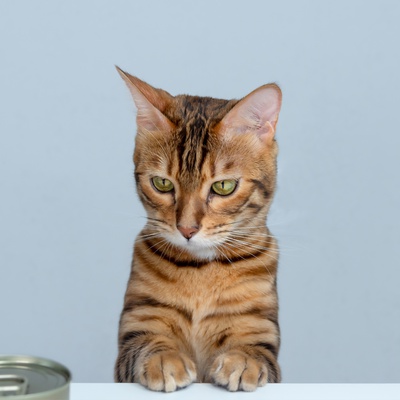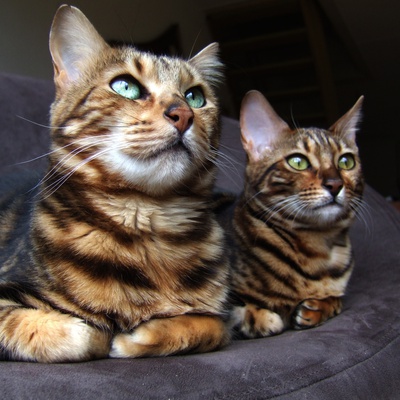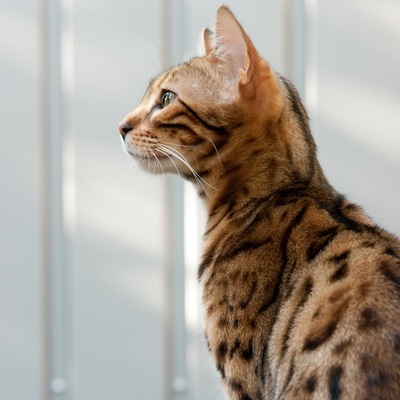Introducing the Bengal
Find out everything you need to know about the Bengal: its characteristics, its behaviour, its training and how much one costs.
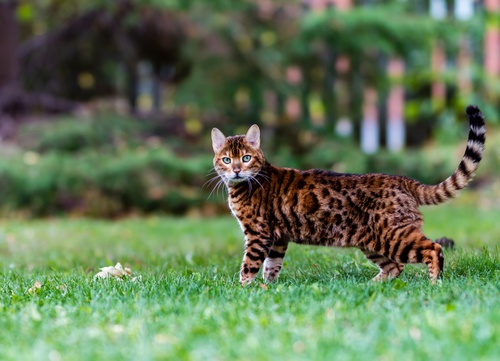
Find out everything you need to know about the Bengal: its characteristics, its behaviour, its training and how much one costs.
The Bengal is a unique breed. Originally from the United States, this breed is the result of a cross between a domestic black cat and an Asian leopard cat. This unusual mix gives them the look of a wildcat and a confident nature. Bengal cats are a very active breed, they are full of energy and more playful than cuddly. This doesn't stop them from being friendly, quiet companions. You’ll adore this domesticated little leopard!
This section outlines the unique features of the Bengal breed of cat.
The Bengal is a medium to large cat about 13,5 inches tall and weighing between 9 pounds and 15 pounds.
The Bengal has a very short, dense coat. meaning it sheds very little, even when moulting.
Bengal cats are hypoallergenic so if you're unfortunate enough to be allergic to cats, they're the perfect pet!
As a rule, the Bengal has a spotted coat, just like a leopard! However, it can also be marbled.
The Bengal is a versatile cat that adapts easily to any environment providing it has enough room for zoomies and somewhere to relax.
The Bengal gets along very well with humans and with other cats. They aren't afraid of strangers and are very affectionate towards their owners.
Bengals are generally very healthy cats. They may however be susceptible to certain conditions common to the breed.
Training should start as early as possible to understand and tame your Bengal kitten's wild instincts.
We can help you!
Every cat has its own character and specific needs. Making the right choice will ensure his well-being and yours.
Thanks to our quiz, you'll know which breed is right for you, depending on your lifestyle, expectations and many other criteria.
Don't wait any longer and take the quiz to find out the answer!
The Bengal is a very unusual looking cat. Its coat makes it look like a miniature leopard in your living room.
The Bengal is a medium-sized cat. On average, it is around 13,5 inches tall with a length in proportion to its height.
Its weight can vary slightly depending on its gender. The female Bengal is a little lighter than the male, weighing between 9 pounds and 13 pounds. Males can weigh up to 15 pounds.
Bengals are slow growers. Their height, build and overall strength continue to develop until they are 24 months old.
The Bengal has a very short, super silky coat. This dense coat makes the Bengal cat very resilient to changes in temperature and protects them from the elements.
Plus, like the Savannah, Bengal cats are hypoallergenic! Their short coat makes them the ideal choice for anyone with allergies. Even so, some allergies are very severe. You should seek medical advice before deciding to take on a new pet.
The striking markings and colour of the Bengal's coat are undoubtedly its most distinctive feature! Its coat is usually spotted with rosettes, irregular two-coloured markings all over its body.
Marbled coats are also an acceptable pattern for the breed. This pattern is typified by irregular horizontal spots and lines. The breed standard does not allow vertical lines.
Between the ages of 3 and 5 months, Bengal kittens go through a "fuzzy phase" that reduces the level of contrast in their coats. Leopards also go through this phase, helping them to camouflage themselves.
Permitted colours for the Bengal breed are brown, snow, silver and blue.
Bengal coats are extremely easy to look after. They shed very little and only need brushing once a week.
When moulting in spring and summer you can brush more frequently, up to three times a week to get rid of any dead hairs on your Bengal.
Its coat isn't the only thing that makes the Bengal stand out. This powerful cat has a strong frame and a muscular body. Its body stands on four sizeable paws. Its head is a wedge shape with delicate, well defined features, just like its wild ancestor. Its muzzle and chin are broad. Two small ears, broad at the bottom and rounded at the top, sit on top of its head. It has beautiful oval eyes that are green or blue in colour. Lastly, its thick tail is rounded at the tip.
Taking care of a Bengal cat couldn't be easier! In addition to a regular weekly brush, Bengal cats are big fans of water and never say no to a nice bath. This should only be an occasional treat though and you'll need to use specially formulated shampoo.
The Bengal is a confident, lively cat. The perfect family pet!
The Bengal cat was created in 1963 by crossing a domestic cat with an Asian leopard cat. The breed has gone through a number of transformations to become the domestic cat we know and love. They are divided into categories.
These categories allow us to rank Bengal cats by temperament and sociability. Bengal cats of all generations are legal to own in the UK and licensing requirements for the breed were abolished in 2007, but only F4 generations onwards can be TICA/GCCF registered and shown.
Domestic Bengals are affectionate and very close to their family! They are easy to live with and get on very well with children and their fellow cats. Having said that, your other pets need to be a good fit for the Bengal's temperament. Bengals are spirited little characters and although they are very affectionate with their owners, they are also rather independent and appreciate time on their own. They are also very playful, mischievous cats with seemingly boundless energy. They need regular, daily activity to thrive.
Bengal cats can adapt to any environment, as long as they have enough space to run and play. They will be just as happy in a city centre flat as in a big house in the sticks. Bengal cats need their own space to play, jump, run and of course lounge around whenever they want. Never underestimate their hyperactivity! If they don't get enough exercise, they will get bored and may become aggressive and destructive.
If you have an outdoor area, this curious cat will be more than happy to go outside and explore new places and smells. You should make sure your feline friend stays safe and doesn't wander too far. Bengals are well known for getting lost, as they are so inquisitive and full of energy.
If you're worried about losing track of your Bengal cat, you can fit them with a cat tracker to track their movements and find them if they run away.
Training your Bengal kitten should start as early as possible. Its wild DNA can make training a little trickier than usual, but Bengal cats respond well to play, attention and kindness. This is an alert and exceptionally intelligent breed of cat! They soak up information like little sponges. When trained with a firm attitude, understanding and flexibility, your Bengal will make excellent company.
Choosing a cat that matches your personality and lifestyle will ensure your well-being and his!
The Bengal is a very healthy breed of cat. However, there are a few breed specific diseases.
Overall, the Bengal is a very healthy breed. However, they can contract diseases like distal neuropathy, a disease that attacks the nervous system, or hypertrophic cardiomyopathy, a disease of the cardiac system. Bengals can also suffer from pyruvate kinase deficiency, a genetic disease that causes severe anaemia. Lastly, like many other animals, they can suffer from hip dysplasia or progressive retinal atrophy.
To look after your Bengal day to day, it's important to have regular vet check-ups to keep their vaccinations against common diseases up to date, as well as for worming and flea prevention.
You also need to take care of their teeth, claws and ears to reduce the risk of infections
The Bengal cat needs a balanced diet that is adapted to its nutritional needs.
It's recommended to feed Bengal cats high quality food specially formulated for active cats, as this is a high energy breed. Choosing a cat food that contains a balanced amount of protein, fat and carbohydrates is crucial.
Bengals are well known for their love of food! If you don't keep an eye on their portions, they have a tendency to overeat and put on weight. Make sure you provide them with a diet that's tailored to their physical activity, age and weight.
Bengal cats are a popular breed in the UK.
There are a few things to consider when looking for a good breeder. First of all, make sure that the breeder is reputable and professional. You should visit the breeder to chat with them, meet the kitten's parents and check the health and living conditions of the cats on the premises.
Next, you need to know about the kitten's current state of health and that its vet checks are up to date.
From June 10, 2024 you must have your cat microchipped by the age of 20 weeks old and register its details in a relevant database such as Petlog or The Governing Council of the Cat Fancy (GCCF). This is a legal requirement in Britain, and failure to comply could result in a fine of
.
The price of a Bengal can vary considerably depending on various factors such as the bloodline, coat quality, sex, age, pedigree and location.
You can expect to pay anywhere from
to
for a Bengal kitten. On top of the purchase price, you'll need to budget for everything the kitten needs to stay healthy and in good condition. For a Bengal this will be around
to
a year.
Choosing a cat that matches your personality and lifestyle will ensure your well-being and his!
To access the most relevant information, suitable payment methods, and delivery in your region, please select the website corresponding to your country.
